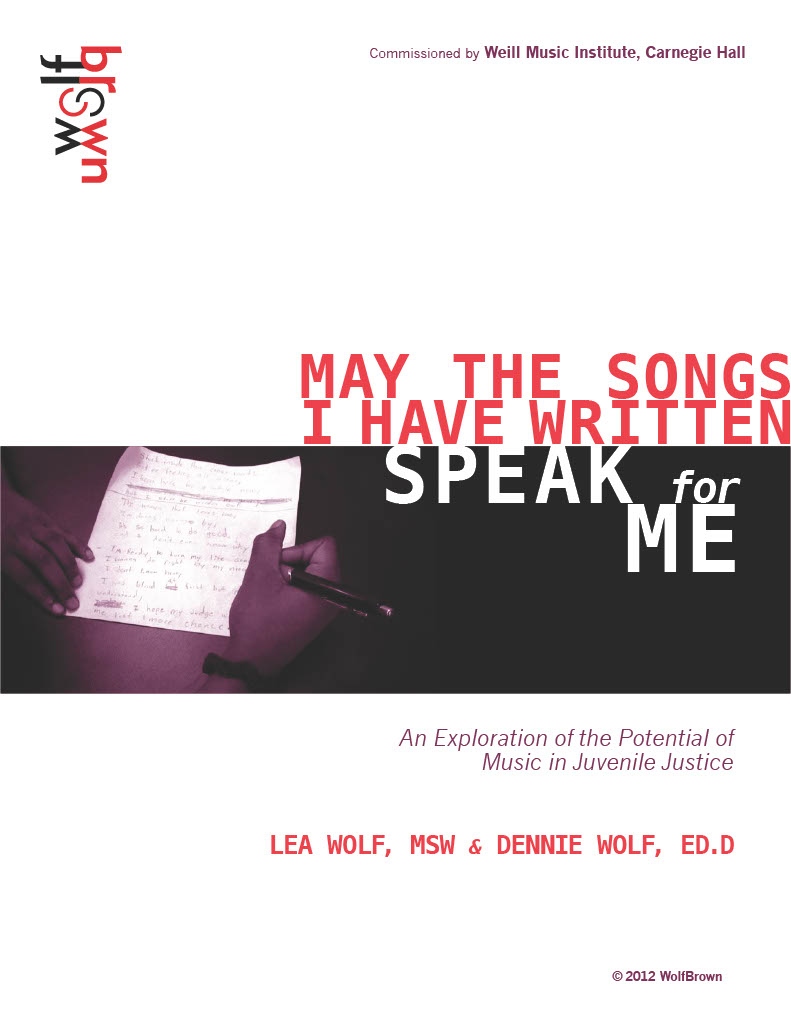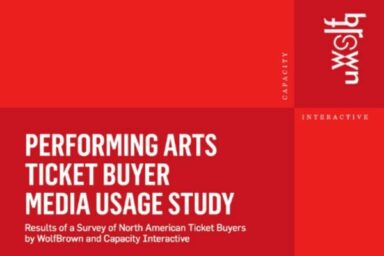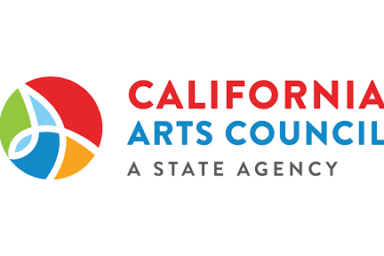An Exploration of the Potential of Music in Juvenile Justice
Executive Summary
For decades the United States has outstripped other nations not only in the number of adults but the number of juveniles, in its correctional systems—systems that have historically failed to rehabilitate the young men and women entrusted to its facilities and services. In fact, involvement in the juvenile justice system has harsh life-long effects, diminishing young people’s school achievement, mental and physical health and, consequently, their ability to reenter and thrive in their communities, to become someone other than that person who made and paid for bad choices.

Nationally, a groundswell of forces is advocating for change in the juvenile justice system. While mindful of public safety, states and municipalities are seeking to re-imagine this system as an intervention that can foster youth development, rather than as a junior penitentiary system. The reform is three-fold. First, a redesigned system focuses on prevention—to reform the process of arrest, arraignment, and detention into a network of effective youth engagement programs, alternatives to detention, community-based placements, probation, and supports. Second, advocates aim to transform the one-hundred-year-old correctional system from a “holding tank” model of incarceration into one that allows for a pause in self-destructive and violent behaviors and promotes development for young people who have lived much of their lives at risk. Finally, the third imperative is to address the harsh current realities of re-entry by creating sustainable paths out of the juvenile justice system and towards purposeful lives.
Turning these hopes into realities will demand a cascade of changes at the community, state, and federal levels, in the design, location, and staffing of juvenile facilities, and in programs that educate, treat, and support young people who enter and then exit the prevention, corrections, and parole systems. But while policy changes can provide the blueprints, funding streams, and agency mandates, it will require a network of partnerships to make the promised reforms realistic, meaningful, and sustainable—fiscally, politically, and socially. In part, this work entails guaranteeing the basic civil rights of youth offenders while in custody and afterwards: they have to be able to enroll in high schools, they must be eligible for jobs, or viable candidates for scholarship programs for colleges. And it entails fundamental services like counseling and high-quality mental and physical health care. But the young people involved in or exiting the justice system need access to more than these basics. Their minds, spirits, and imaginations also deserve attention—many of them will be on their own to invent new choices and futures. Thus, far from being “extras,” the arts could potentially make significant contributions to the reform and future conduct of juvenile justice. If asked to the table, cultural organizations and individual artists could offer a curriculum in ensemble work, persistence, and imagination:
To be enabled to activate the imagination is to discover not only possibility, but to find the gaps, the empty spaces that require filling as we move from the is to the might be, to the should be.
—Maxine Greene, Quoted in Freeman, 2012
Acting at the intersection between juvenile justice reform, youth development, and a sense of the civic mission of cultural organizations, Carnegie Hall, through its Musical Connections program of the Weill Music Institute, is collaborating with New York City’s Administration for Children’s Services, the Department of Probation, the Department of Education District 79, and other New York City agencies to think about how participatory music-centered programming can support young people who enter and exit the juvenile justice system. Since beginning the work in 2009, Carnegie Hall has sponsored ten creative projects: eight in secure detention facilities and two in non-secure detention settings, serving more than a hundred young people, plus audiences of staff, peers, and families. These residencies last two weeks on average and engage young people in songwriting, instrumental playing, producing, and performing. Each residency culminates in a concert for other residents and staff and the production of a CD. The purpose is not only to teach music or the possibility of ensemble work—it is to jump-start the sense of being a person with potential.
The following paper shares what Musical Connections has learned so far in this work by: 1) examining the history and current reforms in juvenile justice; 2) reviewing the underlying research and evaluations conducted by other musical projects both in adult and juvenile corrections; and 3) harvesting and reflecting on its own musical work in juvenile justice over the last three years. The paper contains these sections:
- A history of juvenile justice in the United States with an emphasis on the long-standing tension between incarceration and rehabilitation
- An overview of the current movement for reform
- A summary of basic research on adolescent development, with an emphasis on the new brain science that explains why adolescents are prone to risk-taking, thrill-seeking, and emotionally-driven choices, coupled with a discussion of the potential of music to reach and affect adolescents
- A review of research and evaluations from an international set of music programs in both adult and juvenile corrections facilities, with an emphasis on what such programs accomplish and the specific effects they have
- A reflection on the design principles emerging from effective programs
- An examination of the current work in juvenile justice supported by Carnegie Hall and the Administration for Children’s Services in New York, with an emphasis on the issues and choices that are arising as this work enters a second, deeper, and more challenging phase.
The purpose of this review is to invite readers and stakeholders–including organizations, musicians, staff, and advocates–to think about these questions:
- What exactly can music (or, more broadly, the arts) contribute to the reform of juvenile justice systems?
- What constitutes making that contribution responsibly and well?
- How do we build evidence that music (or the arts more broadly) make a difference in the lives of youth, staff, families, or facilities?
Put even more concretely, how do artists, along with arts and cultural organizations, partner with their communities to provide the alternatives to “the street” that young people seek?




